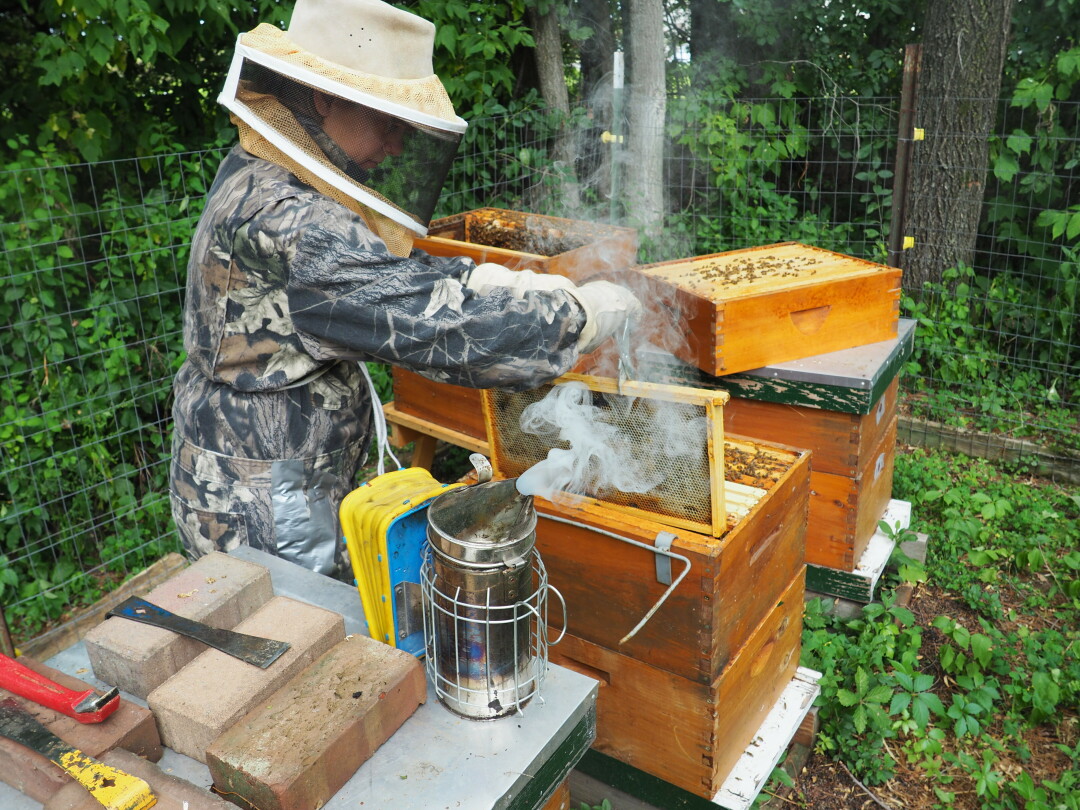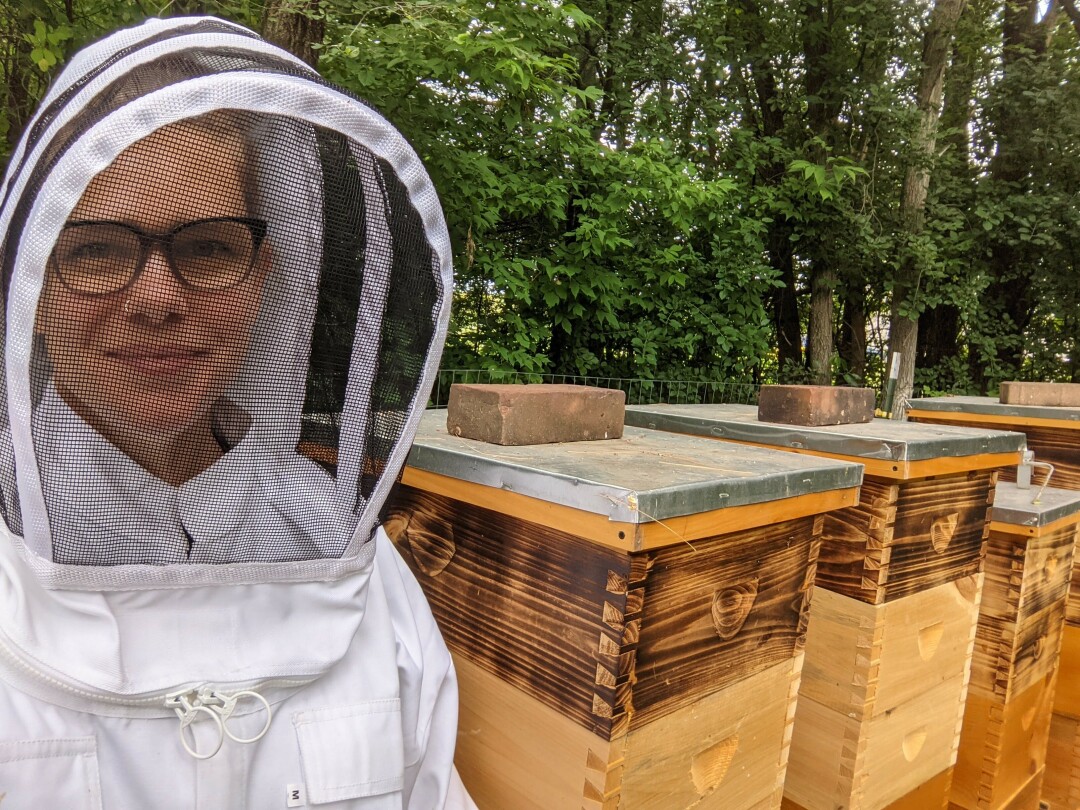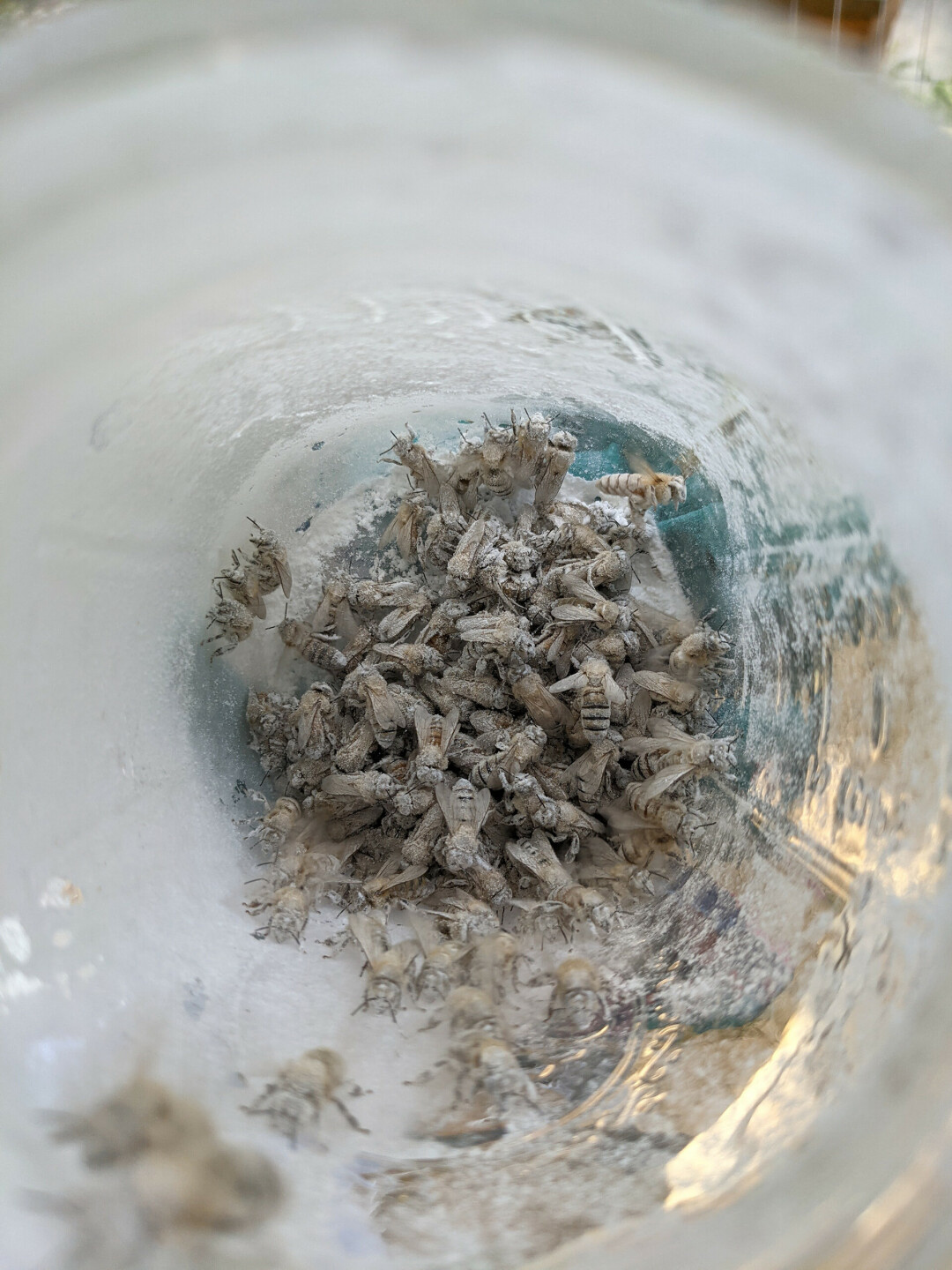5 Things You Should Know as a New Beekeeper
a new-‘bee’ guide to starting your own hive and helping to save the bees

I’ve never seen creatures work together the way that honey bees do. Last summer, I began learning about beekeeping from my uncle, and became intrigued by what I can learn from the bees. In April, my uncle invited me to join his apiary with my own two colonies. And while I learn something new every time I visit my bees, there are a few tips I wish I had known when I got started beekeeping.
Here are a few of those tips for folks looking to create a buzz by starting their own hives:
1. THERE IS NO MANUAL, SO LEARN AS MUCH AS YOU CAN FROM OTHERS. Learn as much as you can before beginning an apiary. Research, read, and attend seminars through the Chippewa Valley Beekeeper’s Association, where you’ll have an excellent shot at finding a local mentor. You’ll have plenty of questions, since beekeeping is a continual learning process – even for the most experienced.

2. HONEY IS FOR THE BEES. Don’t expect honey; the bees eat first! Each super holds 8-10 frames, and each frame holds 6-8 pounds of honey. In winter, expect to provide the bees with 60-80 pounds of honey, but every hive varies. Any additional honey is yours to enjoy.
3. DANDELIONS ARE IMPORTANT! DON’T GET RID OF THEM. Honey bees are our most important pollinators. But did you know when you spray for mosquitoes or use pesticides, there’s a good chance you’re killing the pollinators that land on treated plants? Dandelions are one of the first food sources for bees in early spring. Bees get their protein from pollen (and carbs from honey). To sustain their hives, they begin foraging for early blooming plants.

4. STOP, DROP, AND SUGAR ROLL. Bees love sugar, so it’s a good thing that one of the ways to test for pests like Varroa mites is to do the sugar roll once a month. A half-cup scoop of bees – approximately 300 – is dumped into a jar with a screened lid. Powdered sugar is then added to the jar. Next, gently roll the bees to coat them with sugar, which, after two minutes, causes the mites to fall off the bees. Now, shake the jar – just like a saltshaker – into a white container where the mites’ red bodies will be visible. If three or more mites are found, it’s time to treat the colony. After counting the mites, place the bees back into the colony where the other workers will assist in cleaning them off.

5. BE PREPARED WITH THE PROPER TOOLS. Bee butts are cute, but “bee” careful: You can get stung! Always keep your smoker going and your hive tools handy. In addition to mimicking a fire, driving the bees into their hive, the smoke also mutes pheromones. After stinging, an alarm pheromone is released, alerting other bees to defend their home. If stung, use the hive tool to scrape the stinger off, rather than pulling, which forces the venom sac into the site, causing more irritation. Puff smoke onto the sting to reduce the pheromones.


